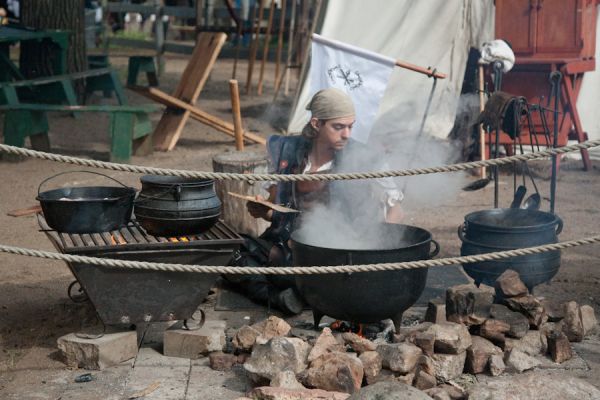Cast Iron has been used for several centuries in providing meals to others. Ideally, they were to be used and handed down to the offspring, who would hand it down to their offspring. If “hand me down” cast iron is not available, finding used well-seasoned cast iron at garage sales and/or estate sales are the best way to go. Cast Iron pots include fry pans, griddles, dutch ovens, cauldrons, sauce pots, and grills in all different sizes.
Cast iron cookware, in my humble opinion, is great. Once seasoned, cooks can use less oil and they are easy to clean and maintain. Sometimes, it is difficult to buy used cast iron and it becomes necessary to buy new (pre-seasoned) cookware. Pre-seasoned does not mean it is seasoned as it should be. Things will still stick to the “pre-seasoned” new cookware. Below are some steps I can offer on how to season your own cast iron cookware. Remember: Pot lids need to be seasoned as well.
1. If you have a fire pit or barbecue pit, that is ideal. The heat is intense, but it will get the job done efficiently without smoking up your house.
A. If you are a vegetarian or vegan, use olive oil. This will take longer (about 10 times) as the fats will take longer to caramelize.
B. If you eat meat, use lard. Three seasonings should do the trick.
2. Using the fire pit or barbecue, coat the interior and exterior of the pot with oil/lard and put onto the fire. The oils may catch fire and this is expected. After 10 minutes, turn the pot over so the inside may be done as well; after 10 minutes, pull off of the heat.
3. Coat again and repeat (3 times for lard or 10 times for olive oil)
4. Once cool after the final firing, wash with water and cloth only. Do not scrub your pot and do not use soap. After you use it for cooking, only light scrubbing with a cloth or natural fiber scrubber with water should be used. You don’t want to remove the carbons that have been used to season your pot.
 If you are one of the unfortunate people who do not have access to fire and can only use a stove, I will warn you that this can be a smelling and messy project.
If you are one of the unfortunate people who do not have access to fire and can only use a stove, I will warn you that this can be a smelling and messy project.
Preheat the oven for 450 degrees. Once hot, coat your pot in the oil of your choice (olive oil or lard). Keep in the oven for 45 minutes and pull out to re-coat the pot. Repeat for steps 3 and 4, skipping steps 1 and 2.


